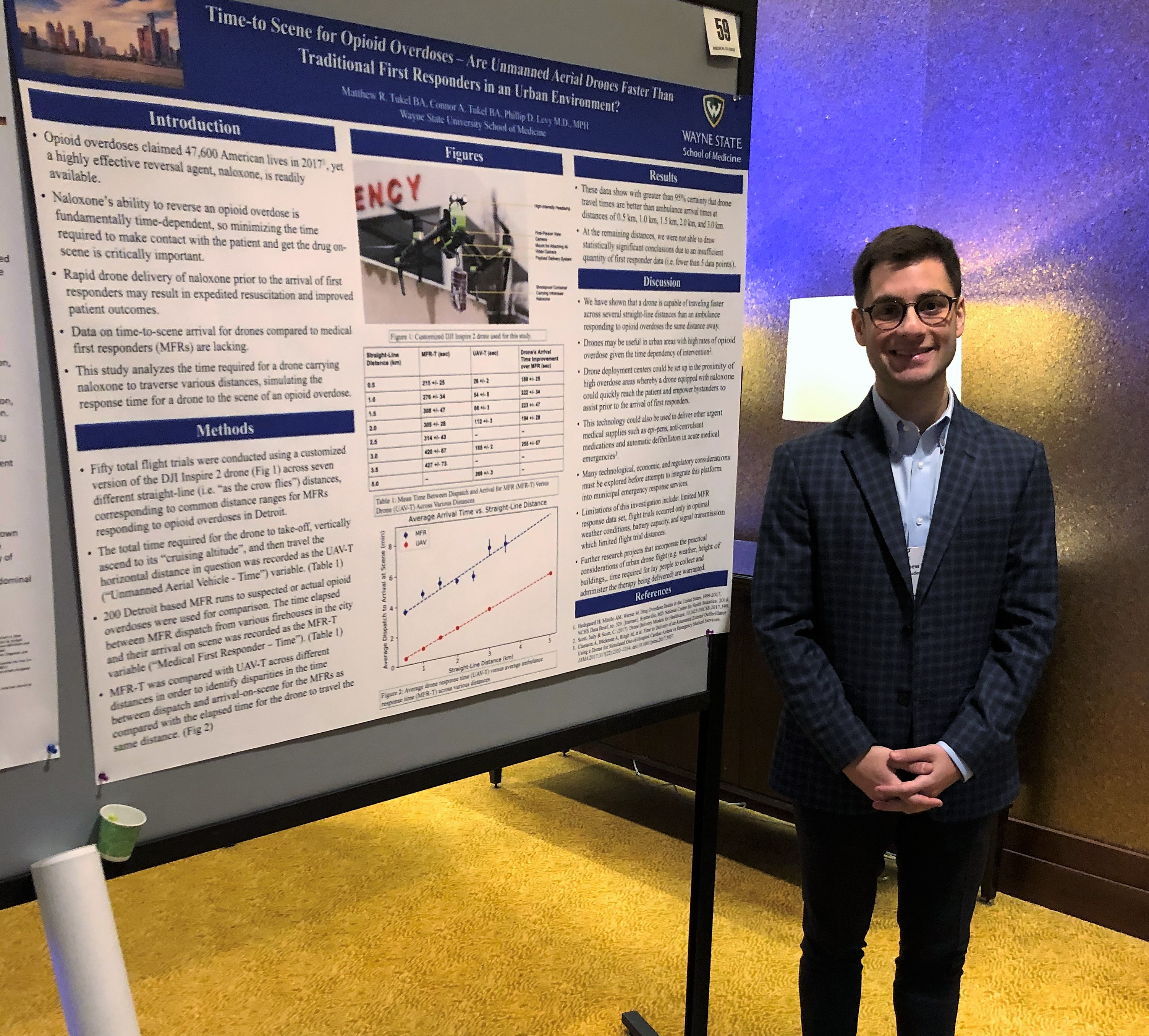The brothers behind a system designed to quickly deliver a package containing the anti-overdose drug naloxone in an emergency have proved that their unmanned aerial drone is faster than traditional first-responders.

Third-year Wayne State University School of Medicine student Matthew Tukel presented “Time-to-Scene for Opioid Overdoses – Are Unmanned Aerial Drones Faster than Traditional First Responders in an Urban Environment?” at the Michigan American College of Physicians’ annual meeting in Grand Rapids, Mich., last month. The poster won first place in the medical student category.
Younger brother Connor Tukel is a first-year medical student at Icahn School of Medicine at Mount Sinai in New York. Both worked with WSU Assistant Vice President of Translational Science and Clinical Research Innovation Phillip Levy, M.D., M.P.H., to explore whether drones are capable of traveling faster across several distances than ambulances responding to opioid overdoses, leading to expedited resuscitation and improved patient outcomes.
“Our results were very positive and objectively showed that the drone is as fast, if not faster, than ambulances, particularly at short distances of less than three kilometers,” Matthew added.
Drone deployment centers could be established in the proximity of high overdose areas, where drones equipped with naloxone could quickly reach the patient and empower bystanders to assist before the arrival of first-responders. The technology could deliver other urgent medical supplies such as EpiPens, anti-convulsant medications and automatic defibrillators in acute medical emergencies.
Tukel won a travel award to present the findings at the National American College of Physicians meeting in Los Angeles next April.
Naloxone’s ability to reverse an opioid overdose is fundamentally time-dependent. The customized drone model – the DJI Inspire 2 with high-intensity headlamp, first-person view camera, payload delivery system and shockproof container for carrying intranasal naloxone – is applicable in cities where available ambulances do not satisfy the number of patients who need services. Fifty flight trials were conducted flying the drone across seven different straight-line distances, corresponding to common distances for medical first-responders responding to opioid overdoses in Detroit. For comparison, data from 200 Detroit-based medical first responder runs to suspected or actual opioid overdoses were used. The resulting data showed that drone travel times are faster than ambulance arrival times at distances between 0.5 and three kilometers (about 1.85 miles).
“At the remaining distances, we were not able to draw statistically significant conclusions due to an insufficient quantity of first-responder data,” Tukel said.
Matthew Tukel and friend Albert Jose helped found Detroit Aerial Innovations while taking undergraduate classes at WSU. They wanted to enhance and supplement student education through an extensive hands-on curriculum of unmanned aerial vehicles, learning the basics of drone technology – what they’re made of, how to build them and how to fly them – in a safe and controlled laboratory environment.
Further research projects that incorporate the practical considerations of urban drone flight, such as weather, height of buildings, time required for lay people to collect and administer the therapy being delivered, are warranted, Tukel said.